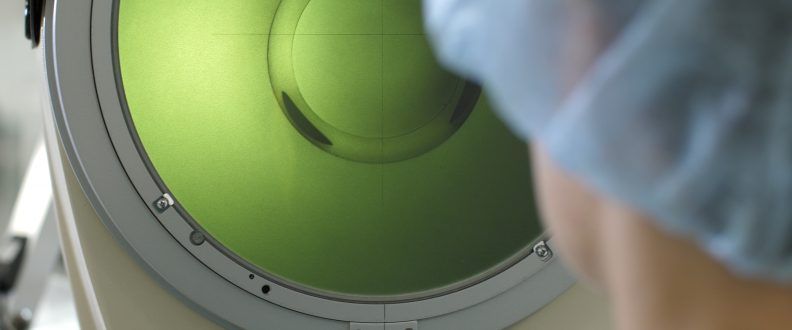The hardness of a material is an indicator of how resistant the material is against a permanent change in shape when a constant compressive force is applied.
Tech Story
Issue 6 (December 2021)
Sonja Granith, Polymer Engineer, Optinova Innovation Center
Normally when it comes to hardness, we tend to talk about indentation hardness. However, there are several mechanisms that can cause the deformation, including scratching, cutting, mechanical wear and bending (1). However, in this article we will concentrate on explaining indentation hardness and the two most common methods to measure hardness, Rockwell and Shore Durometer.
In fact, there are several ways to measure hardness, but most of them fall into three main categories: macro-, micro- and nano-scale measurements. The two most common measurement methods for plastics and elastomers are Rockwell and Shore Durometer. Both are macro-indentation tests (1). Rockwell is usually used for harder materials such as steel and polymers like polycarbonate, polystyrene or polymethacrylates. And for other softer polymers and elastomers, the Shore Durometer method is used (2). Although there are several scales in Shore Durometer (12 in total), only two of them are normally used for polymers and elastomers. They are Shore A and Shore D. Shore A is for softer, mainly elastomers, and Shore D is for harder materials (3).
Both Rockwell and Shore tests are based on the resistance of the material against the penetration of an indenter under a constant load. It is hard to compare the results from different tests and types of materials because the shape of the indenter, test time or elastic recovery effect can have an impact on the result. For example, the Rockwell method takes into account elastic recovery effect, while the Shore Durometer method does not (4). As a result, the accuracy of the Shore method is not absolute with a deviation of 2-3 Shore hardness units.
To measure with Shore A and Shore D, the spring in the measurement device is applied with a specific pressure. The indenter foot is either cone or sphere shaped depending on whether you are measuring Shore A or Shore D. The needle measures the depth of indentation from 0 to 100, with 0 for full indentation and 100 for no indentation (1). For example, materials with 60 Shore A are softer than 90 Shore A. Sample thickness should be at least 6 mm. It is not possible to measure Shore A and Shore D with subjects thinner than 6 mm (5).
Values measured using the Rockwell method are not comparable to those measured with a Shore Durometer. However, you can compare Shore A and Shore D using this formula:
Shore A = 116,1 – 1409 / (Shore D + 12,2)
You must however remember that the accuracy of this measurement method is not absolute. So the results should only be used as an estimation for the hardness of the plastic material (6).
Source:
(1) Broitman, E. 2016. Indentation Hardness Measurement at Macro-, Micro-, and Nanoscale: A Critical Overview. Springerlink. DOI: 10.1007/s11249-016-0805-5
(2) Polymer database. Link: http://polymerdatabase.com/polymer%20physics/ShoreRockwell.html. Accessed December 2021.
(3) Frick, A. et al. 2019. Practical testing and Evaluation of plastics. Wiley VCH.
(4) Harper, C. and Petrie, E. 2003. Plastic materials and processes: A concise encyclopedia. John Wiley & Sons, Inc, New Jersey.
(5) ISO 7619-1 Rubber. Vulcanized or Thermoplastic – Determination of Indentation hardness – Part I Durometer method.
(6) Grellmann, W. et al. 2013. Carl Hanser Verlag.

In order to provide customers with comprehensive tubing solutions, we engage in an open and transparent dialogue with them – that’s the Optinova way. We bring to the table 50 years of expertise in polymers, extrusion automation, secondary operations and quality management.
Andreas Perjus, CTO, Optinova Group
Technology
We take pride in being the top-of-mind thermoplastics and fluoropolymers extrusion partner of over 1 000 customers ever since 1971.
Medical Tubing
From IV tubing to medical-grade heat shrink, we provide customers with the broadest, most versatile tubing solutions for different medical applications.
Industrial Tubing
Optinova offers the most customizable PTFE, FEP, PFA, ETFE, PVdF, MFA and PEEK tubing, available in virtually any size and profile, with deliveries available across the globe.
